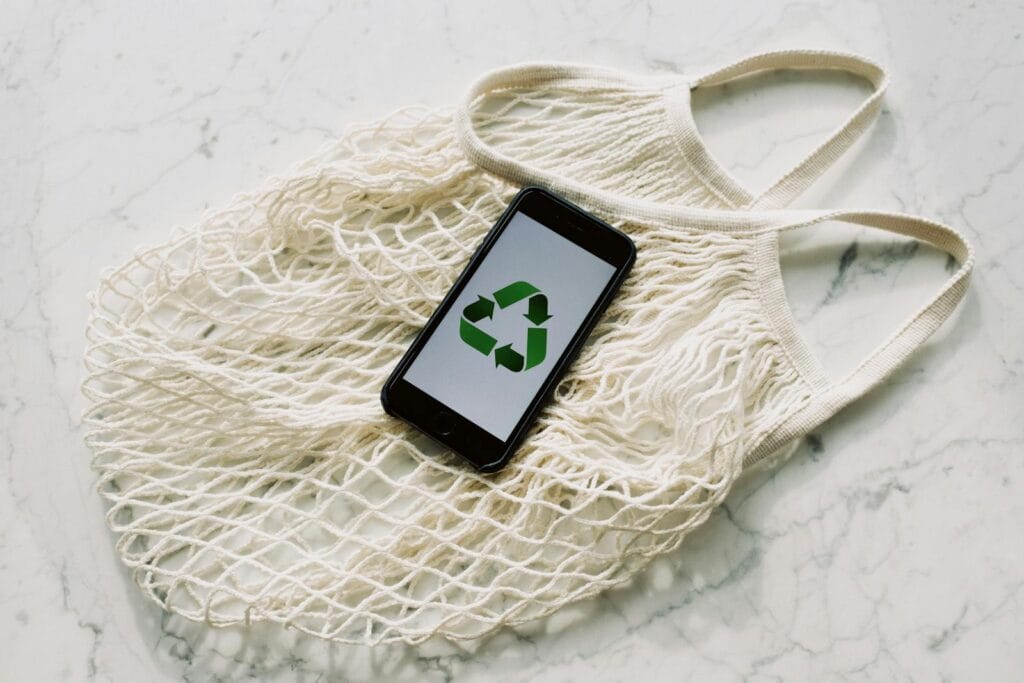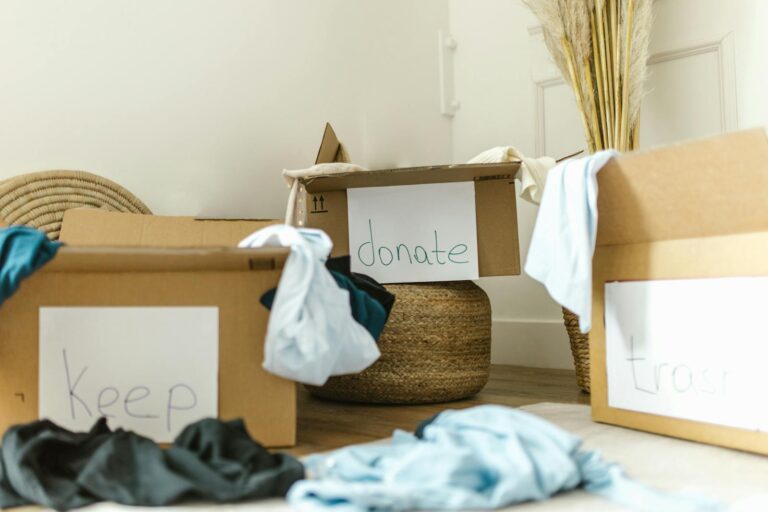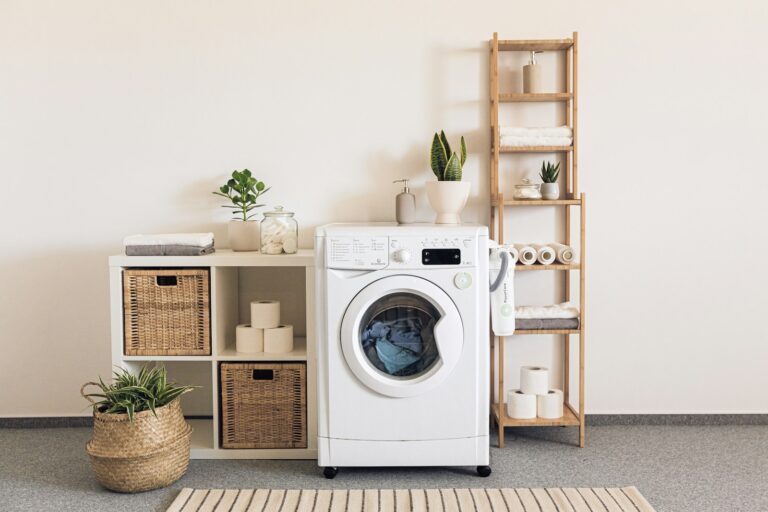Living with less waste doesn’t have to be complicated—or expensive. Actually, a lot of zero-waste habits are easy to start right now and won’t cost you a dime. Small, steady shifts in your daily routine can really cut down your environmental impact, and you’ll probably save some cash over time too. Whether you’re reusing things you already have or just thinking twice before buying, there are plenty of simple changes you can make this month.
Thinking about giving low-waste living a shot? Take a look at your current habits and see where you can make quick improvements. Maybe try buying less and sticking to what you actually need, or swap to reusable menstrual products, or even set up a small compost bin if you’re short on space. Don’t stress about being perfect—zero-waste living is about making better choices when you can, not getting everything right all the time.
Key Takeaways
- Set waste reduction goals that actually fit your lifestyle.
- Start with free, easy swaps—reuse containers, buy less—before spending on fancy new products.
- Sharing resources and connecting with others can make sustainable living more fun and doable.
Fundamental Low-Waste Habits for Everyday Life
Little changes really do add up. These ideas center around saying no to stuff you don’t need, switching to reusables, and finding new uses for things you already own.
Refusing Single-Use Items
One of the easiest ways to start is by just saying “no” more often. At the store, skip the plastic bags and bring your own reusable shopping bag. Out for coffee? Bring your own mug and pass on the disposable cup.
Those freebie pens and trinkets—do you really want them? Most of us don’t use them and they end up as clutter.
Junk mail is another sneaky source of waste. Sign up for paperless billing and stick a “no junk mail” sign on your mailbox. It’s a small move, but it saves trees and keeps your trash bin lighter.
Refusing is actually the first step in the zero waste hierarchy, before even reducing or reusing.
Embracing Reusable Alternatives
Ditching disposables for reusables is a no-brainer. A reusable water bottle is a super simple swap—saves money, cuts plastic.
In your kitchen, try cloth towels instead of paper ones. Beeswax wraps or silicone covers are great for food storage and way less wasteful than plastic wrap.
For groceries, pack:
- Reusable produce bags
- Cloth shopping totes
- Glass jars for bulk items
Eating out? Bring a small kit with reusable utensils, a cloth napkin, and a container for leftovers. It’s not a hassle once you get used to it.
Women might want to check out reusable menstrual products like cups or period underwear—saves money, saves waste.
Reducing and Reusing at Home
Before buying anything, ask yourself, “Do I really need this?” Consuming less is honestly the most effective way to cut waste. If you do buy, go for quality stuff that’ll last.
Get creative with what you already have. Glass jars can hold leftovers, corral small stuff, or even work as drinking glasses. Old t-shirts? They’re perfect as cleaning rags.
Composting food scraps keeps them out of landfills. Even if you live in an apartment, there are countertop composters that work surprisingly well.
Try fixing things instead of tossing them. Learn a few basic mending skills for clothes, or look for local repair shops for electronics. Some communities even have “repair cafés” where folks help you fix broken stuff for free.
Progress, not perfection is what matters most at home.
Zero-Waste Food and Grocery Strategies
Tweaking how you shop for and store food can really shrink your household waste. Even small changes in your habits make a difference—less packaging, fewer food scraps.
Bulk Shopping and Minimal Packaging Choices
Zero waste grocery shopping starts with a little planning. Bring your own bags, jars, and containers. A lot of stores now offer bulk goods like grains, spices, and nuts—just fill your own containers and go.
Look for places where you can:
- Tare (pre-weigh) your containers
- Use your own bags for produce
- Get oils and vinegars in refillable bottles
When bulk isn’t an option, pick products with minimal or recyclable packaging. Some brands are finally moving to cardboard, glass, or compostable stuff instead of plastic.
Check your local bulk store’s policies before you go—some have changed things up, but many still let you bring your own clean containers.
Smart Food Storage and Waste Reduction
Storing food the right way keeps it fresh longer and means less waste. Some fruits and veggies need the fridge; others don’t. For berries, a quick vinegar-water wash helps them last.
A few handy tips:
- Beeswax wraps instead of plastic wrap
- Stand herbs up in water like flowers
- Freeze extra produce before it spoils
- Keep a “eat this first” bin in your fridge
Taking inventory before shopping helps avoid buying too much. Plan meals around what’s already in your kitchen. Get creative with scraps—veggie ends make great broth, stale bread turns into croutons.
Date leftovers with a washable marker on glass containers so you know what needs eating soon.
Composting Organic Waste
Composting keeps food scraps out of landfills, where they create methane—a nasty greenhouse gas. Instead, your scraps turn into rich soil for plants. No yard? No problem. Countertop composters are made for apartments.
Compostable items include:
- Fruit and veggie scraps
- Coffee grounds and tea bags
- Eggshells and nutshells
- Paper towels and napkins
If you can’t compost at home, check for local community programs or curbside pickup. Some farmers markets and gardens will take your food scraps.
These services help turn waste into something useful—good for the planet and your conscience.
Choosing Local and Plant-Based Options
Sustainable grocery shopping means paying attention to where your food comes from. Local food travels less, so it comes with less packaging and pollution.
Farmers markets are great—bring your own bags and containers, and lots of local farmers are happy to take back egg cartons or berry baskets. CSA subscriptions deliver seasonal produce with little packaging.
Plant-based meals are generally easier on the environment. Try adding more veggies, beans, and grains to your meals. If you do buy animal products, look for local, sustainably raised options.
Growing herbs or veggies at home is about as local as it gets. Even a sunny windowsill can give you fresh herbs and cut down on trips to the store.
Sustainable Habits for Personal and Home Care
Our daily routines—personal care, cleaning, even what we wear—can create a surprising amount of waste. A few simple swaps in the bathroom, laundry, or closet really add up.
Zero-Waste Bathroom Essentials
Start in the bathroom with easy changes. Swap your plastic toothbrush for a bamboo one. When you’re done, it’ll break down naturally.
For periods, try menstrual cups or cloth pads. They last for years and keep thousands of disposables out of landfills.
Ditch liquid soap bottles for bar soap. It lasts longer, comes in less packaging, and works for everything from body wash to shampoo.
Look for plastic-free floss, solid lotion bars, and refillable makeup. Even tiny swaps make a difference in this high-waste area.
Eco-Friendly Cleaning and DIY Projects
You don’t need fancy cleaners. Vinegar, baking soda, and a few drops of essential oil will handle most messes.
Keep a spray bottle of half vinegar, half water for wiping down surfaces. Baking soda works for scrubbing tubs and sinks. Lemon juice is great for cutting grease.
Use old t-shirts or towels as cleaning rags instead of paper towels.
Swap out plastic scrub brushes for wooden or bamboo ones. And get rechargeable batteries for gadgets around the house.
Don’t “wishcycle”—putting stuff in recycling bins just because you hope it’s recyclable. It actually messes up the system.
Clothing, Fast Fashion, and Secondhand Solutions
Fast fashion is a problem—lots of waste, questionable labor practices. Try shopping less and going for quality over quantity.
Thrift stores and second-hand markets are treasure troves. You’ll find unique stuff, save money, and help keep clothes in use longer.
Clothing swaps with friends or family are a fun, free way to refresh your wardrobe.
Learn a few sewing basics so you can repair instead of replace. Fixing a button or patching a hole is easier than you think.
When it’s time to declutter, sell or donate usable items. Upcycle old clothes into rags, pet beds, or whatever you can dream up.
Towards a Circular and Community-Oriented Lifestyle
Low-waste living isn’t just about what you do at home. When you connect with your community and share resources, you help build a better, more sustainable world—and it’s often more fun, too.
Participating in Local Initiatives
Community gardens are awesome for cutting packaging waste and growing fresh food. See if there’s a local plot you can join. Many neighborhoods have composting programs that take food scraps and yard waste, turning them into soil instead of trash.
Look for zero waste groups in your area. They often host clean-ups, workshops, or skill-sharing events. You might pick up a new skill like mending or making your own cleaners.
Farmers markets support the circular economy by slashing packaging and transport emissions. Bring your own bags and containers to cut even more waste.
Donating and Sharing Unused Items
Before tossing something, ask if someone else could use it. Good-condition items can find new homes through buy-nothing groups, local exchanges, or online platforms.
Clothing swaps beat fast fashion any day. Organize one with friends or join a community swap.
Libraries are more than books these days. Tool libraries let you borrow equipment you rarely need, and some places even have toy libraries for kids.
Food-sharing apps are a smart way to cut food waste. You can donate unused pantry items or share extra garden produce with neighbors.
Monitoring Progress with Trash Audits
A trash audit is a surprisingly eye-opening exercise. For a week, collect all your household trash, then sort and weigh it by type—food, plastic, paper, whatever. You’ll see what you toss most.
Once you know, set a couple of goals. Too much food waste? Try meal planning. Lots of packaging? Seek out bulk options. Jot your findings in a notebook or spreadsheet.
Repeat every few months to spot improvements. Many people find they cut their waste by half (sometimes more) just by paying attention and making a few focused changes.
Get your family involved—making it a group effort boosts awareness and commitment to cutting waste together.
Frequently Asked Questions
Zero waste living comes with lots of questions. Here are some answers to help you make practical changes in different parts of your life.
How can I incorporate zero waste practices into my everyday routine?
Take a look at what you’re tossing out most often. Once you notice your usual waste, you’ll have a better idea of where to start. For a lot of folks, plastic packaging is the main culprit.
Don’t try to overhaul your whole life overnight. Set small, realistic goals. Maybe start by using reusable shopping bags or just bringing your own water bottle from home.
Make a simple weekly plan with a few steps you actually want to try. That way, you can see progress without getting overwhelmed. Honestly, even tiny changes pile up before you know it.
What are some practical steps to take for reducing waste in the kitchen?
Try swapping single-use stuff for reusables—think bamboo dish brushes, compostable loofahs, or soy wax wraps instead of plastic wrap. These simple swaps reduce kitchen waste more than you’d expect.
Store leftovers in glass containers instead of those flimsy plastic ones. When shopping, grab pantry staples like rice or beans from bulk bins and use your own containers.
Composting food scraps is a game-changer, even if you’re in an apartment. Tiny countertop compost bins or just storing scraps in the freezer until you can drop them off works well.
Can you provide examples of how to adopt a zero waste lifestyle in a small apartment?
Use your walls—hang planters and grow a few herbs. You’ll skip the plastic packaging and get some fresh green vibes indoors.
Pick things that do more than one job. For example, a solid chef’s knife can handle a bunch of tasks, so you don’t need a drawer full of gadgets.
Hit up local farmers markets with your own bags and containers. You’ll cut down on packaging and maybe find some cool local produce.
Quality over quantity really matters. A sturdy mop or broom will last way longer than any disposable pads.
What are the five principles of zero waste, and how can they be practically applied?
The five basics: Refuse, Reduce, Reuse, Recycle, and Rot (compost). These help guide waste reduction decisions.
Refuse what you don’t need—like those random freebies or extra packaging. Just saying “no thanks” can make a surprising difference.
Reduce by buying less and picking quality stuff that lasts. Reuse things whenever you can, or fix them up instead of tossing them.
Recycle what’s left, but follow your local rules so it actually gets recycled. Compost food scraps and other organics to give nutrients back to the earth.
What strategies can schools implement to encourage waste reduction among students?
Set up recycling and compost bins all over campus, with clear labels and maybe even pictures so kids know what goes where.
Try a “zero waste lunch” day—teach students how to pack lunches without any disposable stuff. Maybe even do a little competition to see which class cuts down the most waste.
Let students run the show with environmental clubs that plan waste audits or awareness campaigns. When they’re in charge, they usually care more.
Bring waste reduction into class projects. Maybe students track their trash at home or brainstorm ways to fix common waste problems.
How can individuals effectively reduce their waste output when shopping or dining out?
Try bringing your own containers, utensils, and maybe even a cloth napkin when you eat out. You might be surprised—lots of restaurants are totally fine serving your food in your own container if you just ask.
Shopping with a list helps a ton. It keeps you from grabbing random stuff you don’t need, which usually ends up sitting around or getting tossed. Planning meals ahead of time can really cut down on food waste too.
Look for foods with less packaging, or at least packaging you can recycle or compost. Grabbing loose produce instead of those wrapped-up packs is a small switch, but it adds up.
And when you order drinks, just let them know you don’t need a straw or any extra disposable stuff. More places are only giving out paper straws if you ask anyway—so why not skip it?




